
| Version | Summary | Created by | Modification | Content Size | Created at | Operation |
|---|---|---|---|---|---|---|
| 1 | Wenich J- Watt anapuripakorn | + 3577 word(s) | 3577 | 2021-10-11 06:19:50 | | | |
| 2 | Vivi Li | + 153 word(s) | 3730 | 2021-10-12 04:01:38 | | |
Video Upload Options
An ever-increasing demand for electrical power and soaring levels of energy consumption around the world have led to an energy crisis. Thus, this entry focuses on the conventional technologies against those of newer developments in electrical power generation such as using nitrogen generators. The nitrogen generator method is most appealing as it is a seemingly free energy already existing in nature. A nitrogen generator with a 5000 (Nm3/h) capacity has the potential to be used to analyze gas composition and the results are compared with the gas composition of a conventional steam turbine, which is used to pressurize 6000 (kWh) injection steam turbines. The magnetic bearing must be installed in both systems to modify all centrifuged systems which reduces all energy consumption in all systems by more than 50%. Artificial intelligence is used with the machine to analyze and control nitrogen gas flow to provide a more precise evaluation resulting in a more efficient technology. It should further be noted that the nitrogen turbine is superior to the steam turbine because it does not require the burning of fossil fuel to generate power. Hence, it is crucial to modify conventional technologies to improve energy sustainability and begin the long task of tackling environmental issues.
1. Introduction
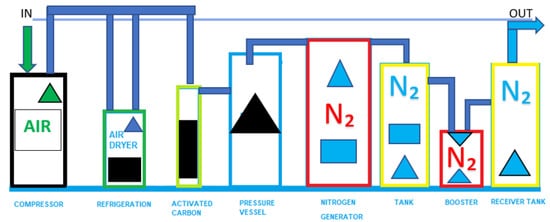
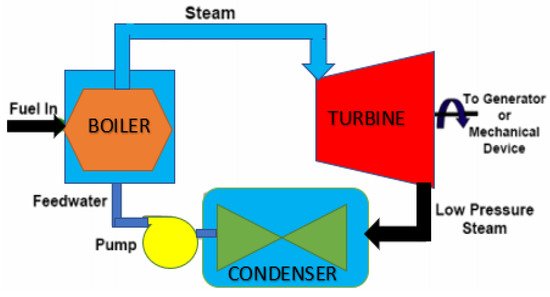
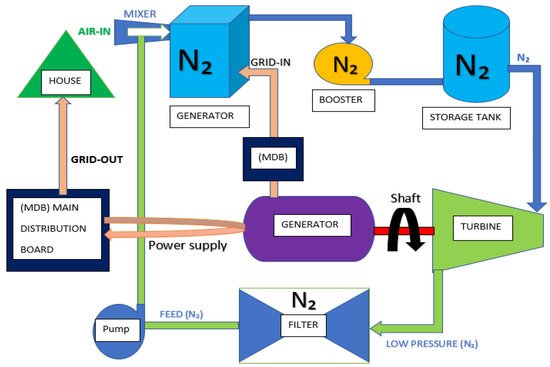
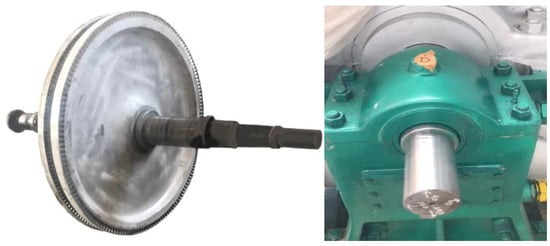
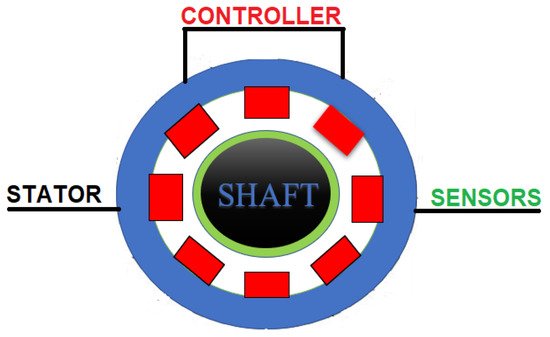
2. Theoretical Implications
3. Results and Discussion
3.1. Comparison of Effectiveness and Properties of Nitrogen and Steam

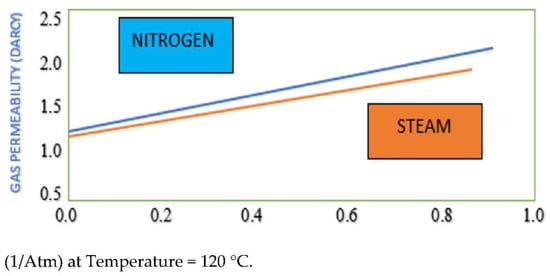
| Descriptions | Injection Steam Turbine (Set) 6000 (kW/h) | Nitrogen Generator (Set) 5000 (Nm3/h) |
|---|---|---|
| Rated power (kW/h) | 6000 | - |
| Rated speed (rpm) | 8000 | - |
| Incoming temperature (°C) | 435 | 40 |
| Pressure into the (gas) steam and nitrogen (bar) | 34.3 | 34.3–300 |
| Consumption of vapor rate (kg/s) | 6.36 | 1.73 |
| Balanced gas production ratio per one unit and in this case the equation has not yet been modified, (set) of machines | 1 | 4 |
| Electricity consumption rate of motor (kW/h) | - | 2400 |
| Balance of power for supply output (kW/h) | 3600 | - |
| Price of products (USD/set) | 1,529,519 | 6,118,078 |
| Possibilities after installing the magnetic bearing system (cost savings) | 50% | 50% |
| Balanced gas production ratio per one unit and in this case the equation has not yet been modified, (set) of machines | 1 | 2 |
| Electricity consumption rate of motor (kW/h) | - | 1200 |
| Balance of power for supply (kW/h) | 4800 | - |
| Price of products (USD/set) | 1,529,519 | 3,059,039 |
| Availability (hours) | 24 | 24 |
3.2. Efficiency Comparison of N2 Generator and with injection Steam Turbine Engine
| Parameters | Temperature (°C) |
Pressure (bar) |
Density (kg/m3) |
|---|---|---|---|
| Nitrogen | 40 | 1.0 | 1.081 |
| 40 | 10 | 10.600 | |
| 40 | 30 | 32.300 | |
| Steam | 99.63 | 1.0 | 0.590 |
| 179.88 | 10 | 5.147 | |
| 233.84 | 30 | 15.009 |
| No. | Parameters | Injection Steam Turbine | Nitrogen Generator Size 5000 (Nm3/h) |
|---|---|---|---|
| 1 | Electrical generator output (kW/h) | 6000 | - |
| 2 | Speed (rpm) | 8000 | - |
| 3 | Pressure into the system (bar) | 34.30 | 34.30–300 |
| 4 | Temperature inside the system (°C) | 435 | 40 |
| 5 | Gas energy consumption rate (kg/s) | 6.36 | 1.73 |
| 6 | Balanced gas production ratio per one unit and in this case the equation has not yet been modified (Set) | 1 | 4 |
References
- Mahmoud, H.K. Lecyure 4: CHAPTER 2 Energy Sources; Faculty of Engineering, Department of Electrical Engineering: Giza, Egypt, 2017.
- IRENA. Renewable Power Generation Costs in 2019; International Renewable Energy Agency: Abu Dhabi, United Arab Emirates, 2020.
- Sagliano, M.; Ishimoto, S.; Macés-Hernández, J.A.; Seelbinder, D.; Dumont, E. Guidance and Control Strategy for the CALLISTO Flight Experiment. In Proceedings of the 8th European Conference for Aeronautics and Aerospace Sciences (Eucass), Madrid, Spain, 1–4 July 2019.
- Bysani, S.K.K.; Karpur, A.; Arun, N. Vertical Landing Rockets. In Proceedings of the 4th TMAL02 Expert Conference, Linköping, Sweden, 14 October 2019; Volume 8, pp. 33–34.
- Dongliang, W.; Qifeng, C.; Luohaijun, L.M. A Landing Buffer System for Vertical Takeoff and Vertical Landing Reusable Launch Vehicle. In Proceedings of the 8th European Conference for Aeronautics and Aerospace Sciences (Eucass), Madrid, Spain, 1–4 July 2019.
- Ferrante, R. A Robust Control Approach for Rocket Landing. Master Thesis, School of Informatics, University of Edinburgh, Edinburgh, Scotland, 2017.
- Nonaka, S.; Nishida, H.; Kato, H.; Ogawa, H.; Inatani, Y. Vertical landing aerodynamics of reusable rocket vehicle. Trans. Jpn. Soc. Aeronaut. Space Sci. Aerosp. Technol. Jpn. 2012, 10, 1–4.
- Singer, S. The Energy Report: 100% Renewable Energy by 2050; Ecofys B.V.: Utrecht, The Netherlands, 2010.
- Tromly, K. Renewable Energy: An Overview; National Renewable Energy Laboratory (U.S.): Golden, CO, USA, 2001.
- Lin, F.; Wang, Z.; Zhang, Z.; He, Y.; Zhu, Y.; Shao, J.; Yuan, D.; Chen, G.; Cen, K. Flue gas treatment with ozone oxidation: An overview on NOx, organic pollutants, and mercury. Chem. Eng. J. 2020, 382, 123030.
- Vattanapuripakorn, W.; Khannam, K.; Sonsupap, S.; Tongsantia, U.; Sarasamkan, J.; Bubphachot, B. Treatment of Flue Gas from an Infectious Waste Incinerator using the Ozone System ARTICLE INFO ABSTRACT. Environ. Nat. Resour. J. 2021, 19, 348–357.
- Chaudhary, G.; Lamb, J.J.; Burheim, O.S.; Austbø, B. Review of Energy Storage and Energy Management System Control Strategies in Microgrids. Energies 2021, 14, 4929.
- Halleux, V. New EU Regulatory Framework for Batteries: Setting Sustainability Requirements; EU Legislation in Progress; European Parliament: Brussels, Belgium, 2021.
- NERC. Energy Storage: Impacts of Electrochemical Utility-Scale Battery Energy Storage Systems on the Bulk Power System; NERC: Atlanta, GA, USA, 2021.
- Fordham, E.; Allison, W. Safety of Grid Scale Lithium-ion Battery Energy Storage Systems. 2021. Available online: https://www.researchgate.net/publication/352158070_Safety_of_Grid_Scale_Lithium-ion_Battery_Energy_Storage_Systems (accessed on 25 September 2021).
- U.S. Department of Energy Battery Storage in the United States. An Update on Market Trends; U.S. Department of Energy Battery Storage in the United States: Washington, DC, USA, 2021.
- Ma, J.; Li, Y.; Grundish, N.S.; Goodenough, J.B.; Chen, Y.; Guo, L.; Peng, Z.; Qi, X.; Yang, F.; Qie, L.; et al. The 2021 battery technology roadmap. J. Phys. D Appl. Phys. 2021, 54, 183001.
- Vérez, D.; Borri, E.; Crespo, A.; Mselle, B.D.; de Gracia, Á.; Zsembinszki, G.; Cabeza, L.F. Experimental Study on Two PCM Macro-Encapsulation Designs in a Thermal Energy Storage Tank. Appl. Sci. 2021, 11, 6171.
- Patrice, N.; Andrew, N.; Cesare, B.; Christofer, L.; Hector, R.; Ho, K.H.; Kunal, G.; Mamoon, A.; Neil, A.; Timo, L.; et al. Battery Storage; Battery Storage IMIA Working Group Paper. 2019. Available online: https://www.imia.com/wp-content/uploads/2020/01/IMIA-WGP-112-19-Battery-Storage.pdf (accessed on 25 September 2021).
- Kocer, M.C.; Cengiz, C.; Gezer, M.; Gunes, D.; Cinar, M.A.; Alboyaci, B.; Onen, A. Assessment of Battery Storage Technologies for a Turkish Power Network. Sustainability 2019, 11, 3669.
- Deotti, L.; Guedes, W.; Dias, B.; Soares, T. Technical and Economic Analysis of Battery Storage for Residential Solar Photovoltaic Systems in the Brazilian Regulatory Context. Energies 2020, 13, 6517.
- U.S. Department of Energy Spotlight: Solving Industry’s Energy Storage Challenges; Office of Technology Transitions (OTT): Washington, DC, USA, 2019.
- Zhongming, Z.; Linong, L.; Wangqiang, Z.; Wei, L. Handbook on Battery Energy Storage System; Asian Development Bank: Metro Manila, Philippines, 2018.
- Osigwe, E.O.; Gad-Briggs, A.; Nikolaidis, T.; Jafari, S.; Sethi, B.; Pilidis, P. Thermodynamic Performance and Creep Life Assessment Comparing Hydrogen-and Jet-Fueled Turbofan Aero Engine. Appl. Sci. 2021, 11, 3873.
- Enslin, J. Rankine Cycle Efficiency Increase by the Regenerative Recovery of Historically Rejected Heat. Bioenergetics 2018, 7, 155.
- Quoilin, S.; Lemort, V. The Organic Rankine Cycle: Thermodynamics, Applications and Optimization; UNESCO-EOLSS: Oxford, UK, 2011.
- CHP. Catalog of CHP Technologies. Section 4. Technology Characterization—Steam Turbines; U.S. Environmental Protection Agency Combined Heat and Power Partnership: Washington, DC, USA, 2015.
- Owusu, P.A.; Asumadu-Sarkodie, S. A review of renewable energy sources, sustainability issues and climate change mitigation. Cogent. Eng. 2016, 3, 1167990.
- Jović, M.; Lakovic, M.; Bogdanovic-Jovanovic, J. Review of opportunities for steam condenser performance improvements in power plants. In Proceedings of the International Conference Power Plants 2016, Zlatibor, Srbija, 23–26 November 2016.
- Jamróz, M.; Piwowarski, M.; Ziemiański, P.; Pawlak, G. Technical and Economic Analysis of the Supercritical Combined Gas-Steam Cycle. Energies 2021, 14, 2985.
- Kermeli, K.; Worrell, E. Energy Efficiency and Cost Saving Opportunities for Breakfast Cereal Production: An ENERGY STAR® Guide for Energy and Plant Managers; U.S. Environmental Protection Agency, Utrecht University: Utrecht, The Netherlands, 2018.
- Dosa, I.; Petrilean, D. Efficiency Assessment of Condensing Steam Turbine. In Advances in Environment, Ecosystems and Sustainable Tourism; WSEAS Press: Brasov, Romania, 2013; pp. 203–208.
- Albert, P. Steam Turbine Thermal Evaluation and Assessment; Report No. GER-4190 GE; Power Systems: Schenectady, NY, USA, 2000.
- Maxwell, G. Synthetic Nitrogen Products: A Practical Guide to the Products and Processes; Springer Science & Business Media: Berlin/Heidelberg, Germany, 2004.
- Khalil, A. Production of nitrogen from the air during cryogenic process and analyzing the air feed in raslanlf utilities for oil & gas. In Proceedings of the Benghazi International Conference and Exhibition of Oil and Gas 2018, Benghazi, Libya, 25–27 October 2018.
- Pressure Testing for Strength and Leak Tightness. Available online: https://www.coolconcerns.co.uk/imagelib/pdfs/CS_3_Pressure_testing.pdf (accessed on 7 July 2021).
- Realzero Guide to Good Leak Testing; Mill Lane: Carshalton Surrey, UK, 2009.
- Institute of Refrigeration Good Practice Guide 24. Pressurising Installed Systems with Nitrogen to Find Leaks; Mill Lane: Carshalton, UK, 2007.
- Cengel, Y.A.; Boles, M.A. Thermodynamics, An Engineering Approach, 5th ed.; McGraw Hill: New York, NY, USA, 2006.
- Fu, Z.G.; Iqbal, T.; Shah, S.J.A.; Khan, H.I. Study on gas turbine performance by nitrogen injection for IGCC power plant. In Proceedings of the 2019 2nd International Conference on Computing, Mathematics and Engineering Technologies (iCoMET), Sindh, Pakistan, 30 January 2019.
- Ministry of Industry and Trade Guideline for Technical Regulation Volume 2 Design of Thermal Power Facilities Book 3/12 «Gas Turbine»; Trang Tien Ward: Ha Noi, Vietnam, 2013.
- Baxter, L.L. Methods and Systems for Generating Power from Aturbine using Pressurized Nitrogen. U.S. Patent No. 8,963,347, 24 February 2015.
- Da Costa, R.S. Electricity Generation System Based on Nitrogen. U.S. Patent Application No. 11/991,223, 26 March 2009.
- Armstrong, F. Farnborough and the beginnings of gas turbine propulsion. J. Aeronaut. Hist. Pap. 2020, 2, 2.
- Clark, D.; Jansen, M.; Montague, G. An Overview of Magnetic Bearing Technology for Gas Turbine Engines; NASA: Hanover, MD, USA, 2004.
- Brandão, P.; Infante, V.; Deus, A.M. Thermo-mechanical modeling of a high pressure turbine blade of an airplane gas turbine engine. Procedia. Struct. Integr. 2016, 1, 189–196.
- Das, T.K.; Halder, P.; Samad, A. Optimal design of air turbines for oscillating water column wave energy systems: A review. Int. J. Ocean Clim. Syst. 2017, 8, 37–49.
- Da Costa, R.S. Electricity Generation System Based on Nitrogen. European Patent 1929197B1, 12 December 2012.
- Ahad, M.A.; Ahmad, S.M. Investigation of a 2-DOF Active Magnetic Bearing Actuator for Unmanned Underwater Vehicle Thruster Application. Actuators 2021, 10, 79.
- Rao, J.S. Introduction to Magnetic Bearings; Department of Mechanical Engineering, Indian Institute of Technology: Guwahati, India, 2008.
- Ueda, K.; Hasegawa, Y.; Yawata, N.; Yokoyama, A.; Mukai, Y. First Domestic High-Efficiency Centrifugal Chiller with Magnetic Bearings: The ETI-MB Series. Mitsubishi. Heavy Ind. Tech. Rev. 2014, 51, 82–86.
- Parker, S.; Blanchard, J. Variable-Speed Oil-Free Centrifugal Chiller with Magnetic Bearings Assessment; Howard, G., Jr., Ed.; Federal Building and US Courthouse: Pine Bluff, AR, USA, 2012.
- Siebert, M.; Ebihara, B.; Jansen, R.; Fusaro, R.; Morales, W.; Kascak, A.; Kenny, A. A Passive Magnetic Bearing Flywheel. In Proceedings of the 36th Intersociety Energy Conversion Engineering Conference, Savannah, Georgia, July 29–2 August 2001.
- Shrestha, U.; Choi, Y.-D. A CFD-Based Shape Design Optimization Process of Fixed Flow Passages in a Francis Hydro Turbine. Processes 2020, 8, 1392.
- Rogowski, K.; Pawlicki, J. Numerical analysis of the steam flow past the turbine blade stage. J. Mach. Eng. 2017, 17, 102–110.
- Pennaturu, S.; Issac, P. Evaluating performance of steam turbine using CFD. Int. J. Latest Trends Eng. Technol. 2014, 4, 209–304.
- Vasmate, S. Computational fluid dynamics (CFD) analysis of intermediate pressure steam turbine. Int. J. Mech. Eng. Robot. Res. 2014, 3, 459.
- Taxas Instruments. The Engineer’s Guide to Temperature Sensing; Taxas Instruments: Dallas, TX, USA, 2019.
- Li, K.; Horne, R. Experimental Study of Gas Slippage in Two-Phase Flow. SPE Reserv. Eval. Eng. 2004, 7, 409–415.
- Malthe-Sroenssen, A. Chemical Potential and Gibbs Distribution; Universitetet i Oslo: Oslo, Norway, 2013.
- Khalil, K.M.; Ahmad, A.; Mahmoud, S.; Al-Dadah, R.K. Liquid air/nitrogen energy storage and power generation system for micro-grid applications. J. Clean. Prod. 2017, 164, 606–617.
- Cui, M.; Wu, C. Principles of and tips for nitrogen displacement in gas pipeline commissioning. Nat. Gas Ind. B 2015, 2, 263–269.
- Technology and Innovation Report 2021—Catching Technological Waves: Innovation with Equity. Available online: https://unctad.org/webflyer/technology-and-innovation-report-2021 (accessed on 7 July 2021).
- Using Existing Technology to Build a More Efficient Enterprise. Available online: https://rsmus.com/pdf/wp_using_technology_to_build_efficient_enterprise.pdf (accessed on 7 July 2021).
- UN Secretary-General’s Strategy on New Technologies. Available online: https://www.un.org/en/newtechnologies/ (accessed on 7 July 2021).
- Bugała, P. Review of design of high-pressure turbine. J. KONES 2017, 24, 67–76.
- Technology and Innovation Report 2018—Harnessing Frontier Technologies for Sustainable Development. Available online: https://unctad.org/webflyer/technology-and-innovation-report-2018 (accessed on 7 July 2021).
- Bahrami, S.; Ghaffari, A.; Genrup, M.; Thern, M. Performance Comparison between Steam Injected Gas Turbine and Combined Cycle during Frequency Drops. Energies 2015, 8, 7582–7592.




